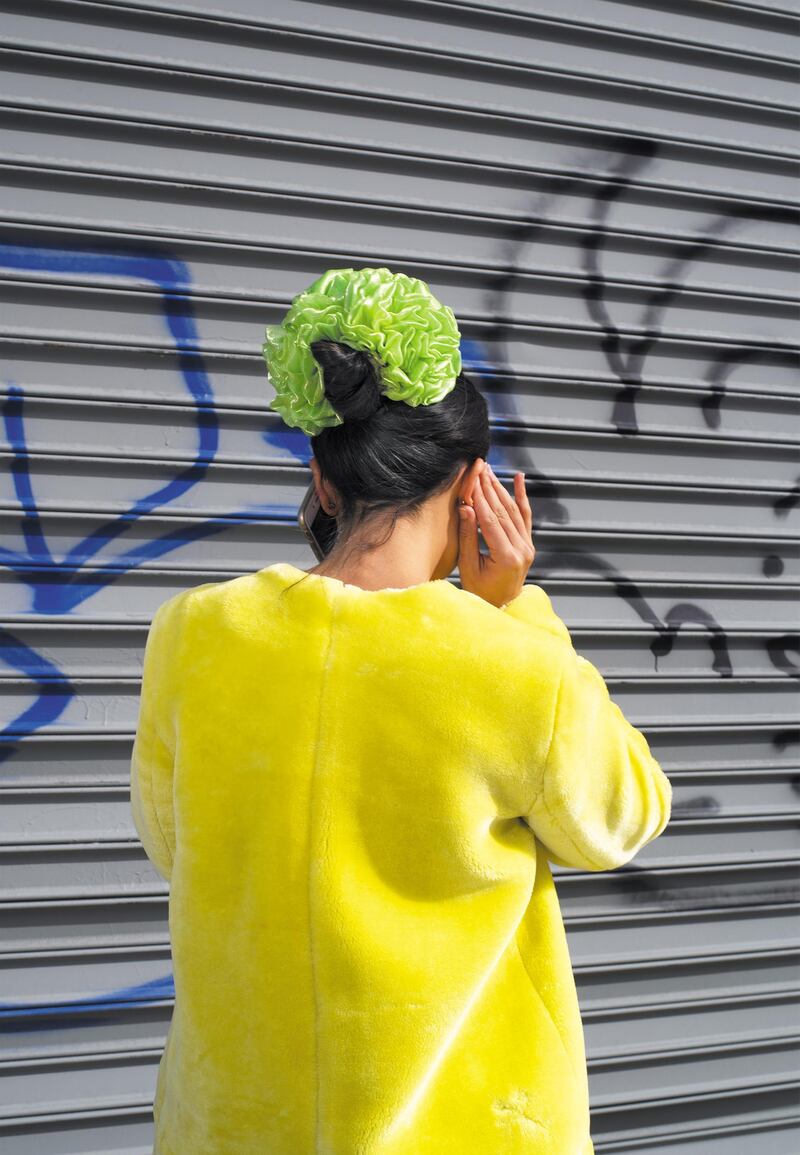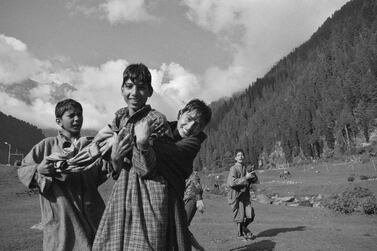"The thing that struck me more than anything else immediately when I moved to New York was how grey and beige all the buildings are," Emirati artist Farah Al Qasimi says. "To somebody who grew up in the Emirates, it's so foreign – I'm used to buildings that are tiled, or covered in pink or gold glass. It took a minute to find some of the pockets that felt more familiar."
In a major new public art installation, Al Qasimi, who was born in Abu Dhabi and has lived in New York on and off since 2014, found familiar sites – and pockets of colour – and she is giving them back to the city. The art organisation Public Art Fund will install Al Qasimi's new series of photography, Back and Forth Disco, in 100 public bus shelters across the city, in slots that typically hold advertisements. Al Qasimi captured the 17 images in the series last autumn, showing subjects mostly in immigrant neighbourhoods in the boroughs of Queens and Brooklyn.
"I'm excited by the prospect of seeing real people in spaces reserved for advertisements," she says. "I want to see people who look like me, or the woman sitting across from me on the subway: New Yorkers. I want people looking like my uncle, who is a Lebanese immigrant and a local deli and bodega owner since the 1980s. He's a true New Yorker. He still went to work during Hurricane Sandy. He embodies that energetic, hardcore spirit."
The images show Arab communities from the inside, focusing on style choices that might pass those less familiar with Arab lifestyles by – an ornate glass chandelier hanging from a wood-effect faux ceiling in a corner store run by Yemenis, for example – or day-to-day details such as a woman threading a customer's eyebrows. Some pictures, like one of a woman with talon-like red fingernails and a white parrot, could easily be set in Dubai; others show the meeting of the two cities. A woman in a bright yellow jumper and a lime-green hair accessory is shown from the back, talking on her mobile phone, and the image is set against an archetypical New York backdrop of grey metal shutters, covered with graffiti.
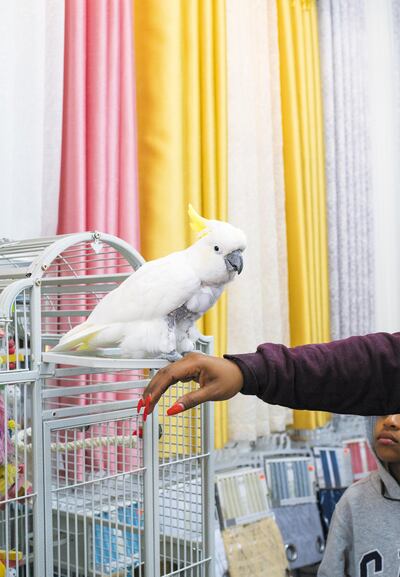
"I didn't set out to look at immigrant communities specifically, but because of the way that New York is populated, almost every community is an immigrant community," Al Qasimi says.
She recalls feeling homesick and visitingone of the neighbourhoods in Brooklyn, which now has a sizeable Arab immigrant population. "I went to Bay Ridge because I was really homesick and I wanted to buy some groceries – some semolina flour, incense and henna – because I missed the smell of henna," she says.
"I've gone to Bay Ridge for years and mostly to shop, but this time it was with a new sense of longing and a new interest in how the place was composed visually. It's a relief to see Palestinian flags hanging in barbershops and to hear Arabic spoken on the street."
Back and Forth Disco is the second collaboration between Public Art Fund and JCDecaux. The first, which went up in August last year, showed images taken by Bronx-born artist Elle Perez. "The most powerful aspect is that people don't choose to see these works. Instead, they are put in the way of people's daily commutes," Katerina Stathopoulou, the curator at Public Art Fund who oversaw the series, says. "Farah was a perfect choice because she finds beauty in ephemeral moments. She captures things that we don't see and shows us the city through her eyes."
Intimacy is crucial to Al Qasimi's work. The photographer is known for her unique aesthetic – she is attracted by colour, the more lurid the better, and the endless reflections of mirrors stops her in her tracks – as well as to her sensitivity towards telltale items. Her images are composed of the kind of everyday objects that are neither highbrow nor particularly remarkable, but that, because of their continued presence in our lives, develop a hold on our affections.
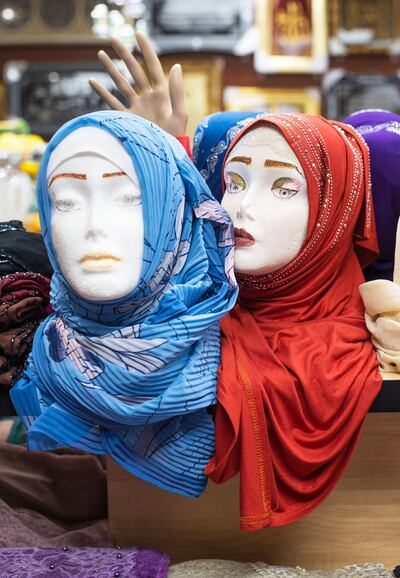
For her solo show last year at the Jameel Arts Centre, she displayed photographs of Dragon Mart, extolling that expansive shopping centre for selling cheap, well, everything. In an image of items arrayed around a bathroom sink, recently displayed at a show at The Third Line in Dubai, I was told visitors frequently commented on one element in particular: the trusty blue box of Masafi tissues, surely in use from royal palaces to room shares.
Bringing out this familiarity in New York was a challenge, particularly because there are few cities so recorded in images, writing or films than New York. Every inch of the city has been turned over for its metaphoric potential, from the rickety subway lines lacking investment, to its juxtaposition of extremes, where homeless people sleep on Fifth Avenue as people wearing Manolo Blahniks trot by.
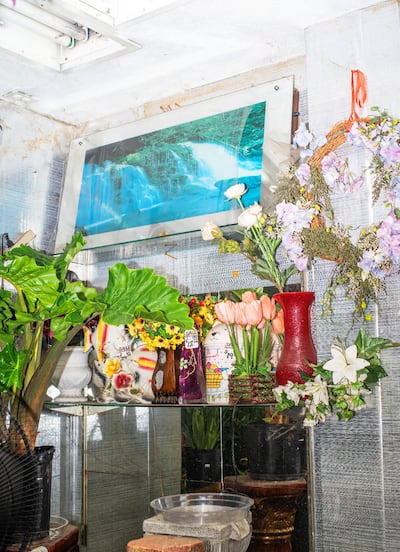
"New York is probably the hardest place in the world to photograph because it's just so incredibly over-photographed," Al Qasimi says. "I lived there for a couple years and tried many times unsuccessfully to photograph it, but it was just a matter of time before I felt comfortable enough to really look more closely and understand where I might fit in."
In the end, these connections recurred, in ways that surprised even Al Qasimi. After taking the photograph of the eyebrow threader, for example, she spoke to a Turkish friend who grew up in New York. She knew the woman Al Qasimi pictured, a woman renowned for her skills beyond her neighbourhood of Brighton Beach.
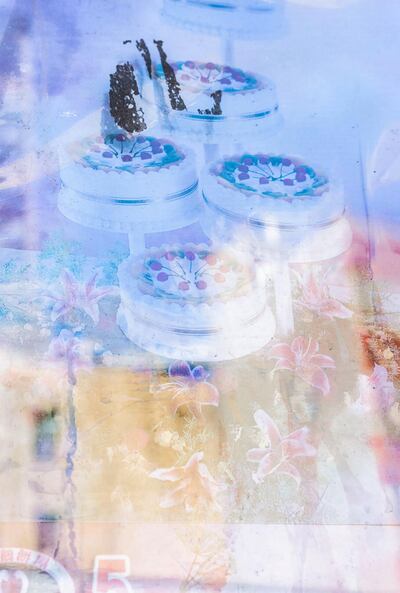
An image showing casual curation – such as an ersatz self-portrait, of a Yankees sticker and an image of Homer from The Simpsons – was taken in Al Qasimi's uncle's house, bringing her own story into the mix. "I love the idea that those connections could be formalised visually, that this work could be an opportunity for recognition in a city that often feels so anonymous," Al Qasimi says. "Sometimes I can lean towards humour as a way of being critical, but with this work and its placement, I want the humour to be celebratory. In these images, I want people to see a world that echoes their own."
Back and Forth Disco can be seen across New York from Wednesday, January 29, until Sunday, May 17
